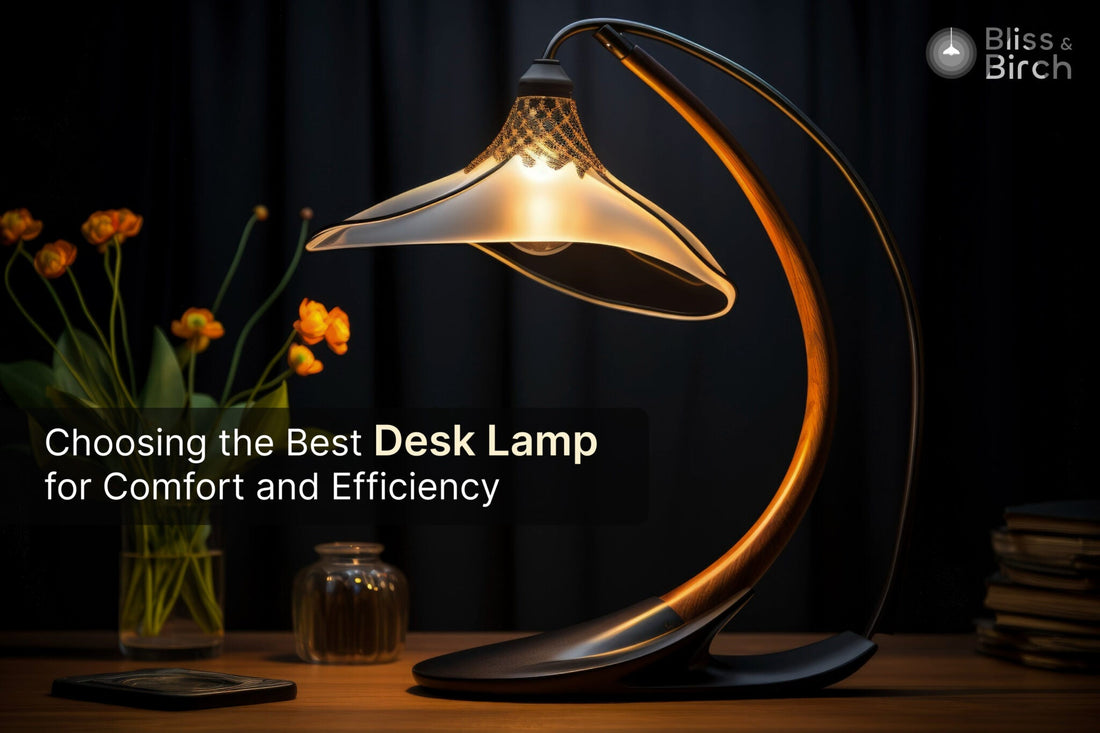
Choosing the Best Desk Lamp for Comfort and Efficiency
Share
A good lamp not only helps you see better but also makes your working space more comfortable and pleasant. There are several factors to be considered when selecting a table lamp: brightness, color temperature, style, and ergonomic design. These elements play a big role in helping you feel comfortable and increase your productivity in daily tasks.
1. Table Lamp Brightness
Brightness is one of the most important factors to think about. A table lamp needs to provide enough light to illuminate your working space without causing eye tension. If a lamp is too weak, you can loosen or lean close to your work, which can lead to discomfort and headaches. On the other hand, if it is very bright, it can create glare and make it difficult to see. When looking for a lamp, you must choose one with adjustable shine. This way you can change the intensity of light, depending on the time of day or the type of work you are doing. A good rule is to look for a level of brightness that facilitates reading without striving.
2. Choosing Between Hot or Cold Light for Table Lamps
The color temperature is another essential factor to consider. The color temperature refers to how “hot” or “cold” light appears. A hot light (around 2700 to 3000 Kelvin) creates a cozy and relaxing atmosphere, which is great for reading or relaxing. However, the colder light (about 4000 to 5000 Kelvin) can be more energizing and is better for work-focused tasks. It is often better to use colder light during working hours as it can help keep it alert and improve its concentration. Consider selecting a study lamp that offers different color temperatures or has settings to adjust based on your needs and activities.
3. Table Lamp Style
The style is also something to think about when choosing a table lamp. A lamp should fit well with the rest of your furniture and add charm to your working space. There are many designs unavailable,from modern to classic. A study lamp that looks good can make you happy and inspired by your working space. However, style should not replace functionality. Always choose a lamp that meets your lighting needs first and consider how it enhances the aesthetics of your table.
4. Adjustability of the Study Lamp
The ergonomic design is crucial, especially if you spend long hours at your table. An ergonomic table lamp should be adjustable and allow you to position the light where you need it. This means that it can be sloped or rotated easily. An effective lamp should also be the right height, so the light shines in on our work without shedding shadows. Good ergonomic projects reduce the risk of neck and eye strain, allowing you to work comfortably for longer periods.
5. Energy-Efficient LED Table Lamps
In addition to these factors, it is essential to choose a lamp with energy efficiency. LED table lamps, for example, consume less energy and save money on electricity bills. They also produce less heat, making them safer to use, as you don’t have to worry about the lamp getting too hot.
Wrapping Up
The right table lamp and study lamp selection involves considering several factors such as brightness, color temperature, style, and ergonomic design. A well-chosen lamp can improve your comfort and significantly increase your productivity. This will help you see your work, reduce eye tension, and create an inviting atmosphere.
Browse through the table lamps collection of Bliss & Birch and find the light fixture that you are looking for.




